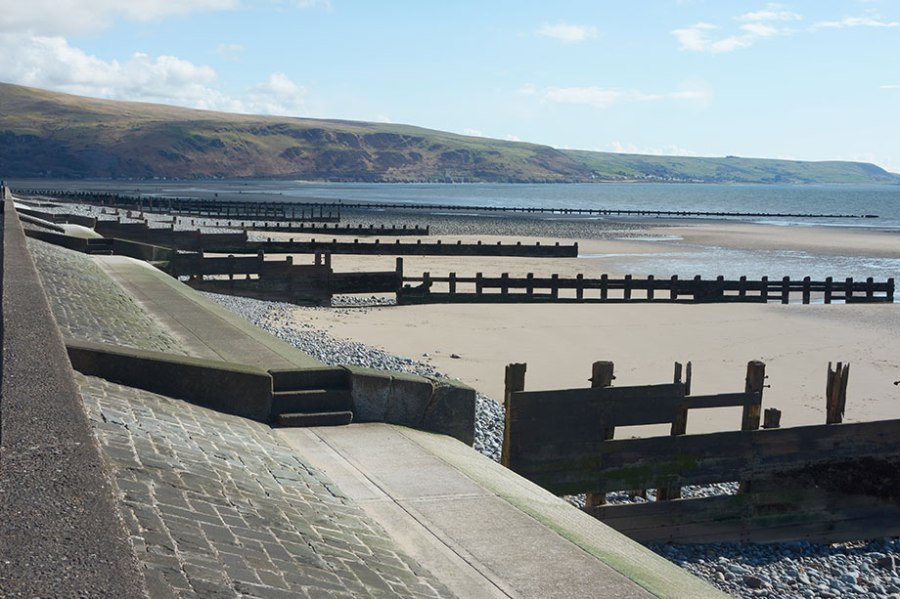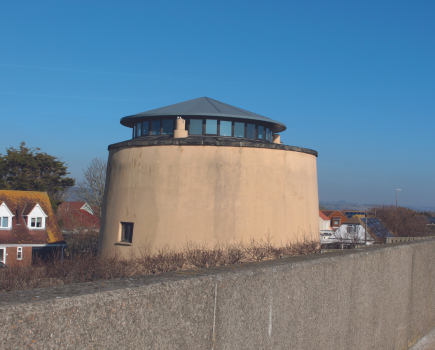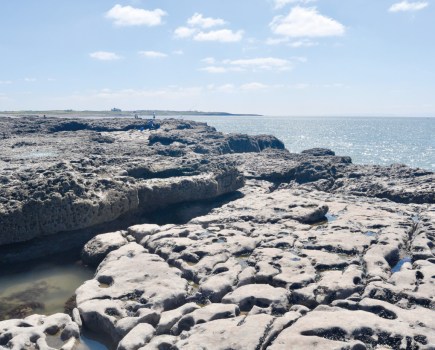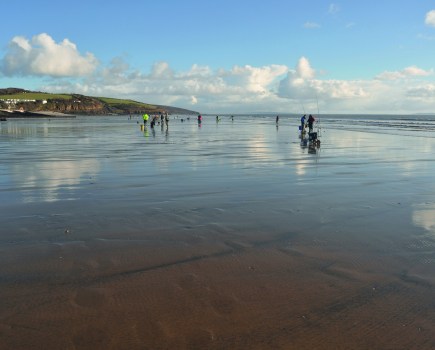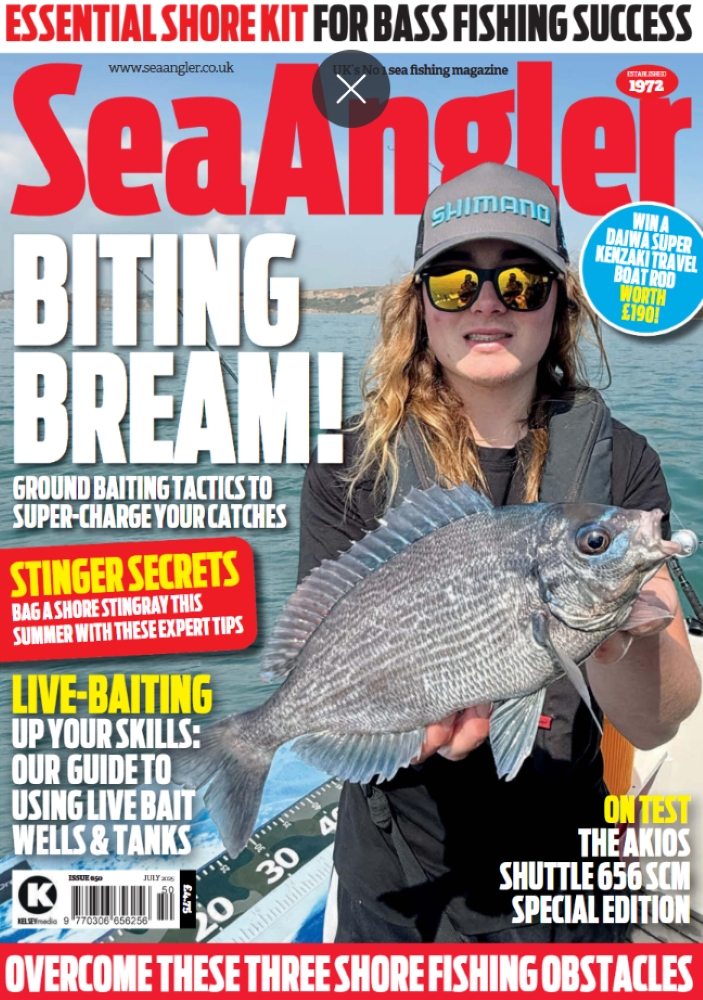A beach of mostly clean sand, it can produce good fishing all year
Situated on the north side of the Mawddach Estuary, this beach offers fishing throughout the year. It is a popular tourist destination and often packed in warm weather between June and September when fishing is best done in the evenings and through the night.
The south side of the beach is sand with high dunes in the middle area, then north of here a series of wooden breakwaters dominate the high tide line, and one long groyne runs from high to low water. The beach will generally fish along its full length.
SEASONAL SPECIES
Summer produces mainly bass, dogfish and flounders, but longer casts find a few thornback rays during May and June. Turbot are caught in the surf, with garfish taken from April to August. In calm weather during spring tides over high water, mackerel work very tight in, especially from the slightly deeper north end of the beach.
Whiting dominate from September to January, but are rarely over 1lb. November onwards produces dabs and flounders, and dogfish are present. School bass stay in the surf throughout the winter.
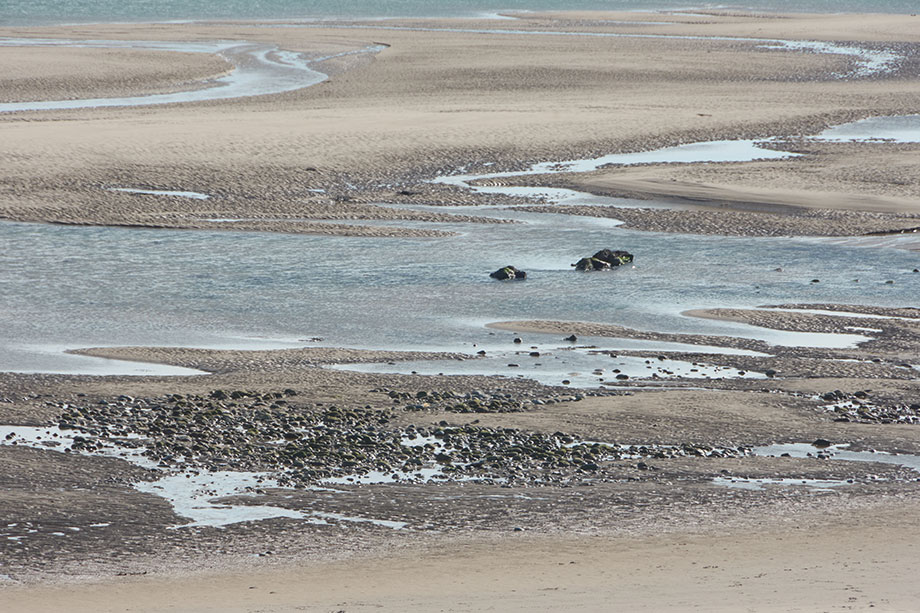
Look for sand gutters and rock patches to find the fish
TACTICS
The beach is mostly clean sand and shallow from the mid-tide line up, but at low water, especially after gales, there will be areas of rougher ground and these offer the best chance of bass.
Heading north from the breakwater towards the leisure centre on the promenade, the beach is best fished either side of low water. North of the leisure centre, in front of the terraced houses right up to where the promenade ends, will fish from low water to high tide with spring tides best. Neap to middle-sized tides often fish best when you are nearer the estuary.
Ideal conditions are a Force 2 to 4 south-west to west wind, either in overcast conditions or fishing at night. Weed can be an issue in rough sea but often eases either side of high water. In the two hours before high water, try dropping a bait into the scoured-out areas at the ends of the breakwaters where bass and flounders may be caught.
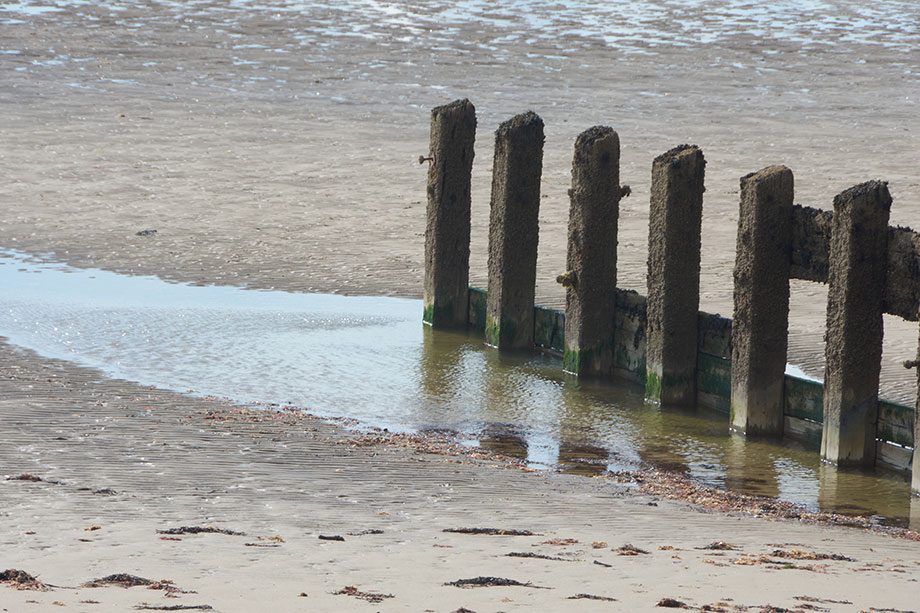
Fish the scooped out areas at the end of groynes for flounder and bass
A peeler crab is the top spring into summer bait for bigger bass, with blow lug or black lug the mainstay for much of the year for flatties and school bass. Mackerel or sandeel combinations are best for rays, with mackerel strips ideal for whiting, dogfish and turbot. After an autumn or winter blow, razorfish can be deadly for dabs and flounders. The gars take small spinners or float-fished mackerel strip on size 6 hooks.
When fishing the rough ground for bass, use a pulley rig with a size 3/0 hook and sacrificial lead weigh. A bass rod rated two to four ounces and either a 5000 sized fixed-spool reel or 6500 sized multiplier with 20lb line copes over the rough ground at medium range in calmer weather.
In heavier seas and for longer distance, use a 12-13ft beachcaster, rated four to six ounces. The reel can be a multiplier, such as a Penn 525 Mag 4 loaded with 20lb mainline and a 60lb shockleader, or, alternatively, a 7500 sized fixed spool, with 30lb braid and a 60lb braid leader.
For rays, fish a pulley rig with a size 3/0 hook with a fixed release wired lead. The best rig for general fishing is either a two-hook loop rig and size 4 hooks for whiting and flatties, or a three-hook flapper, again with size 4 hooks, when fishing at short range.
Words and photography by Mike Thrussell
NEED TO KNOW
GETTING THERE
Access is off the A470, taking the A496 at the roundabout in Llanelltyd. Follow the A496 in to Barmouth, here there is a large Pay & Display car park behind the promenade, which gives access to the beach. There is some roadside parking on the promenade.
TACKLE SHOPS
Barmouth Angling, 1 Ael-y-Don, Church St, Barmouth, LL42 1EW, tel: 01341 280480 or 07570 559304.
Viking Fishing, High St, Barmouth, LL42 1DS, tel: 01341 281821 or 07778 597572.

